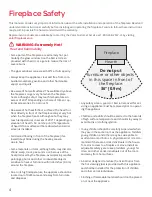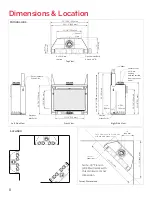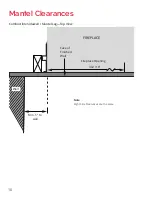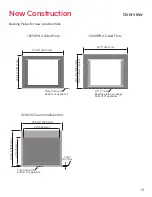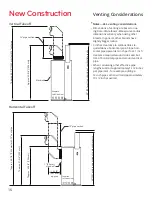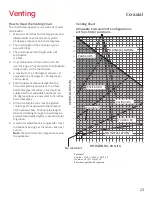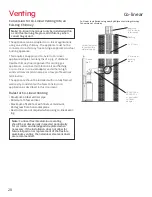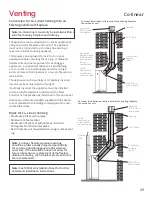
17
Min. 39” [991 mm]
Min. 12-1/2”
[318 mm]
Non-combustible
board required
thickness:
1/2 inch [13 mm]
Planning Wall Finish
Non-Combustible Materials Specifications
Non-combustible materials will not ignite and burn.
Such materials are those consisting entirely of steel,
iron, brick, tile, concrete, slate, glass or plasters, or any
combination thereof.
Materials that are reported as passing ASTM E 136,
Standard Test Method for Behavior of Materials in a
Vertical Tube Furnace at 750 °C shall be considered
non-combustible materials.
Combustible Materials Specifications
Materials made of or surfaced with wood, compressed
paper, plant
fi
bers, plastics, or other material that
can ignite and burn, whether
fl
ame proofed or not,
or plastered or unplastered shall be considered
combustible materials.
Non-combustible cement board
(not required with -RC backing plates)
The H3
fi
replace, when installed in a new construction
application, requires a ½” [13 mm] thick non-combus-
tible cement board or equivalent, to be used as a wall
surface immediately above the unit—see diagram for
minimum coverage.
Extending the cement board well beyond the mini-
mum shown will help avoid cracking due to di
ff
erential
expansion of materials. Pre-drill cement board with
oversized holes and do not over-tighten screws to
avoid cracking due to
heat expansion.
Standard gypsum wall board may be used beyond
the perimeter of the cement board although it is
preferable not to change materials to help avoid
cracking.
Finishing around trims
Additional non-combustible material such as tile and
others may be applied over top of the wall surface or
you may choose to leave it
fi
nished clean with no tile.
The 1030 Clean Installation Kit installs at framing
stage and must be installed at the same time as the
appliance. Wall
fi
nishes cover kit’s panels and butt up
to its
fi
replace opening frame.
Minimum cement board dimensions
Wall Finish
New Construction


